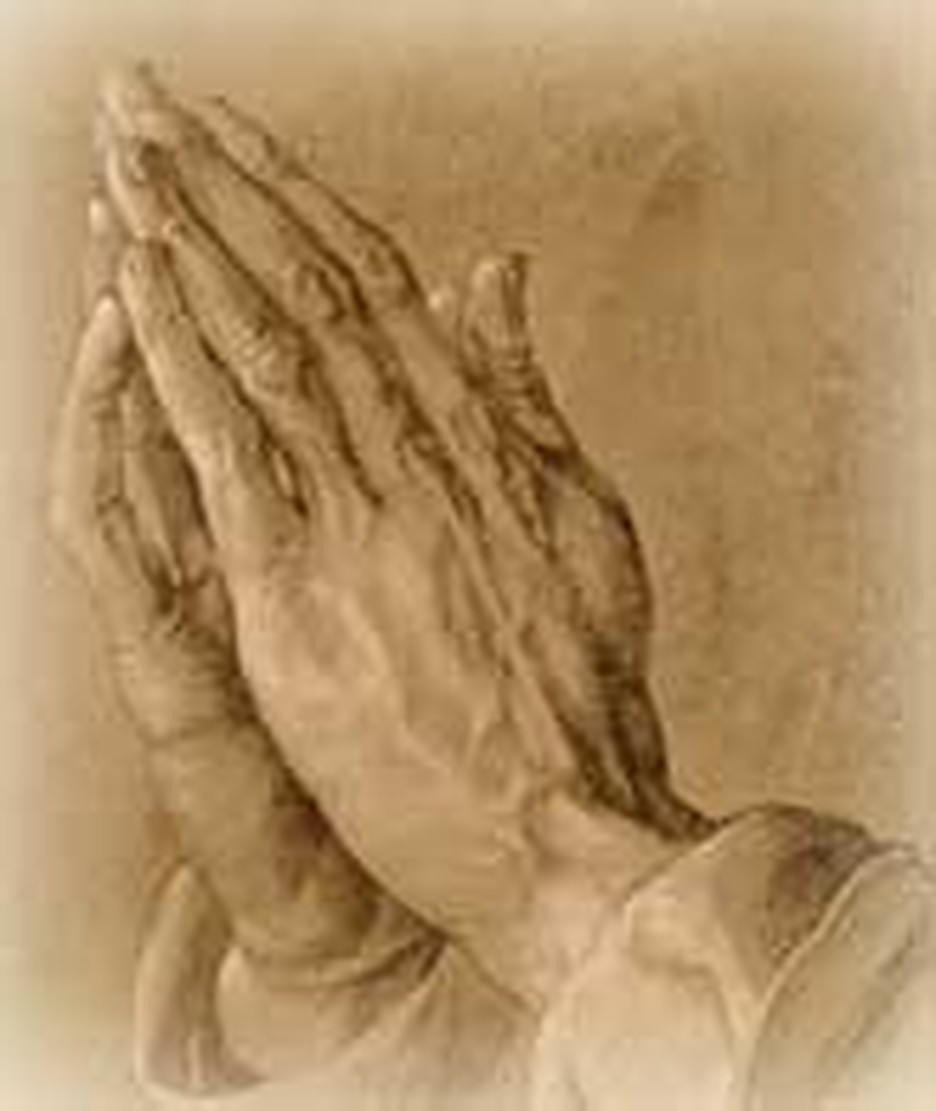
1492 is the year remembered for Columbus' first voyage to America, but it also witnessed the publication of St. Jerome's Letters at Bâle, Germany, on this day August 8, 1492. The book itself was not as significant as its title page which was a woodcut by a rising young artist. Within a few years men would say Germany had only two artists: Holbien and Dürer. Few artists in all of history have equalled Albrecht Dürer's as engravers.
This early St. Jerome was homey, set in a very European building. The lines were simple and yet the cloth of Jerome's robe is full of folds and encases all but the great scholar's face. The face seems somewhat anxious, not particularly scholarly or spiritual. Books stand on a shelf behind Jerome and there is some illusion of depth for the artist worked with the new Renaissance techniques of perspective and shadow. The lion at Jerome's feet, however, is almost a caricature. The whole picture is strong but static.
In 1512 Dürer did a painting of St. Jerome. By then his mastery was complete. Using the techniques of dry point, he placed Jerome out of doors beneath a tree. Jerome looks every inch the prophet. His muscular arms are bare. He sits amidst rocky crags. The lion rests its head upon great padded feet. Jerome's hands are couched for prayer. Halftones abound. The mastery of the earlier work is transcended. The second St. Jerome is considered one of the greatest works ever done, full of proportion and inner life. Dürer did another Jerome in 1514. This Jerome is in an elongated room and shows perspective at its best.
Dürer's work was no idle pleasure. It was not even merely an effort to support himself. It was instead an offering to God of the work of one's hands and a venture in Christian education. Few people could read in those days. Pictures were used in religious works to instruct the illiterate. Dürer did some of the best. Imbued with the Renaissance zest for knowledge and mastery of self and world and with a Reformation hunger for a new relationship with God, Dürer drew a simply incredible range of subject material into his largely religious work and did it all well--allegories, animals, bible stories, buildings, fantasy, figure studies, plants, portraits, self-portraits, utensils.
When Martin Luther emerged, Dürer became his admirer. When Luther was kidnapped, Dürer exclaimed in his diary, "O God, if Luther is dead, who will henceforth explain to us the gospel?" His art reflected his understanding of faith. In his Malencolia the dreadful apparition of a comet (representing God's wrath) is buried in a rainbow (representing his mercy). In the end Dürer never left the Catholic church. He could not abandon the faith of his deeply pious parents. The artist died too young to see the outcome of the Reformation. Yet his work is an example of the vital role of the Christian faith in the arts in the history of the Western world.
Bibliography:
- Bainton, Roland H. Here I Stand. New York: Mentor, 1950.
- Brion, Marcel. Dürer, His life and work. New York: Tudor Publishing co., 1960.
- Eerdman's Handbook to the History of Christianity. Editor Tim Dowley. Berkhamsted, Herts, England: Lion Publishing, 1977.
- Levey, Michael. Dürer. New York, W.W. Norton, 1964.
- Murray, Peter and Linda. Dictionary of Art and Artists. Baltimore, Maryland: Penguin, 1959; p. 93.
- Various encyclopedia articles.
Last updated April, 2007.







